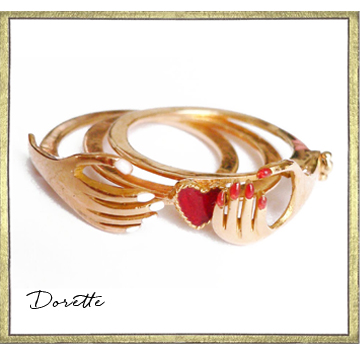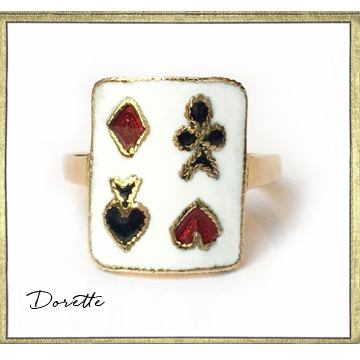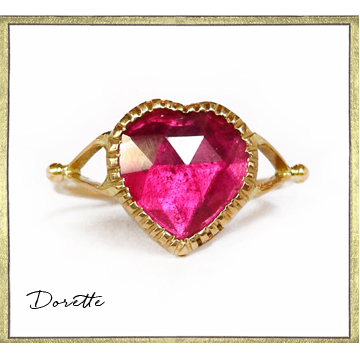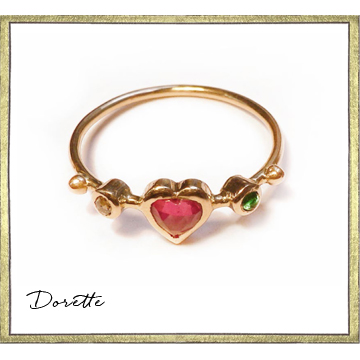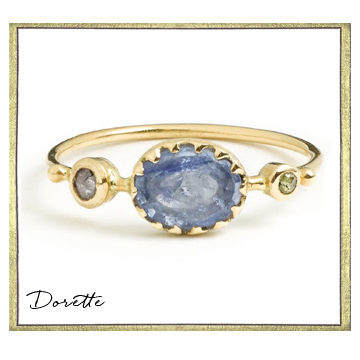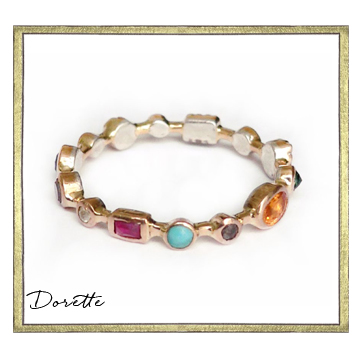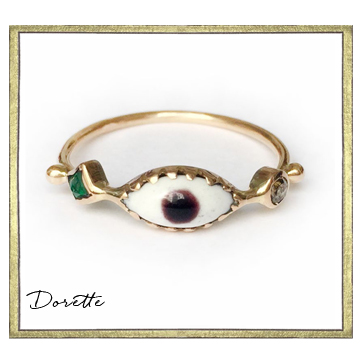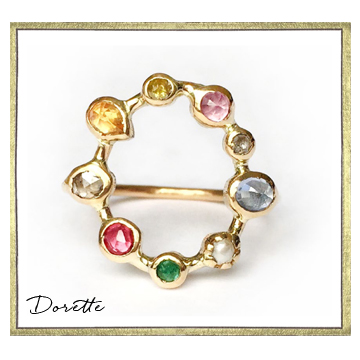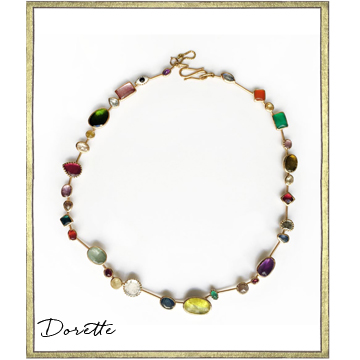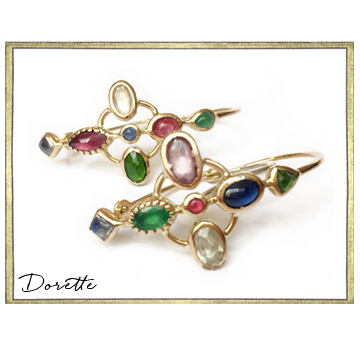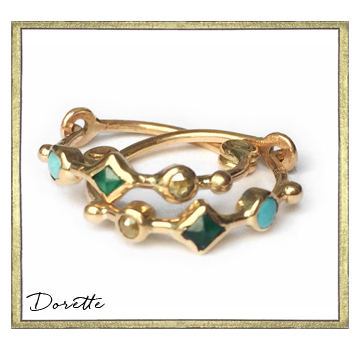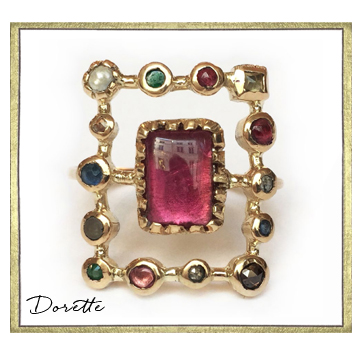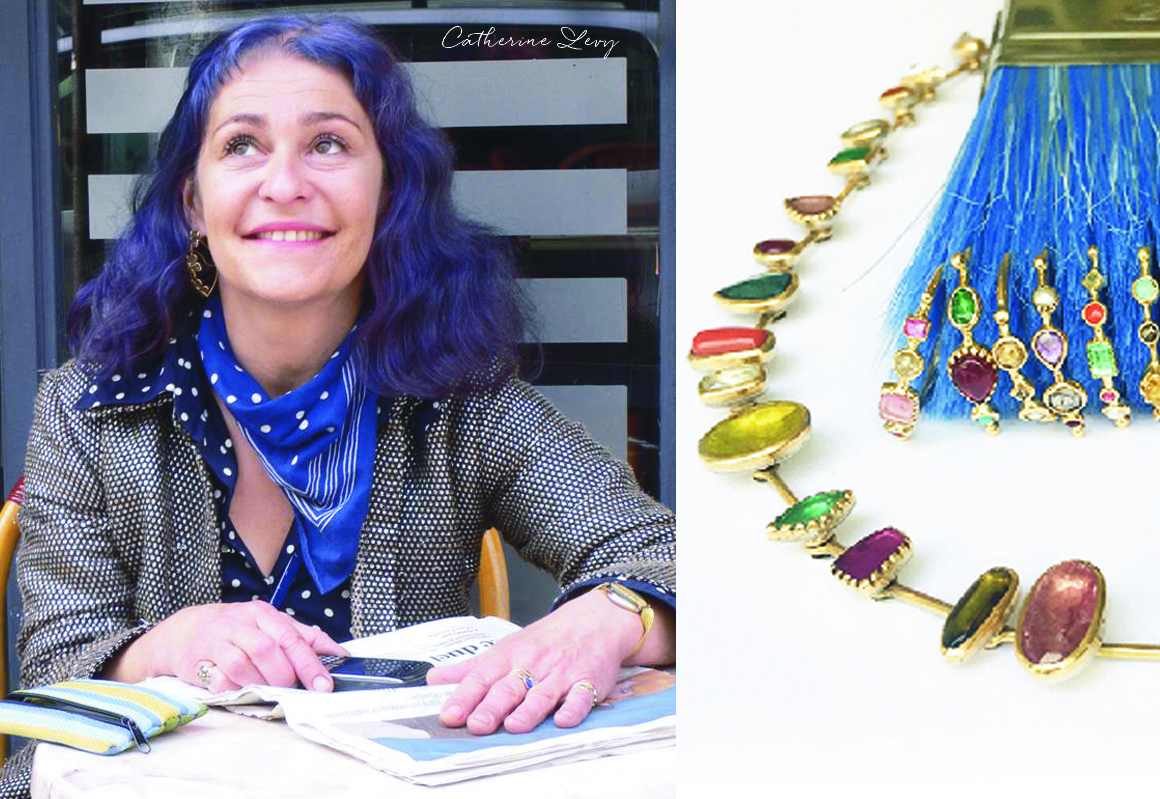
This is a story which starts off as a fairy tale.
It’s the story that Catherine told me one grey February day at a cafe in the 3rd, a haunt just below her new workshop. Before meeting her, she’d warned me in her hoarse voice, à la Jeanne Moreau: ” OK I’ll tell you all about my life, but be sure to bring a sleeping bag “. That was quite a start, so I also brought along my pen and exercise book.
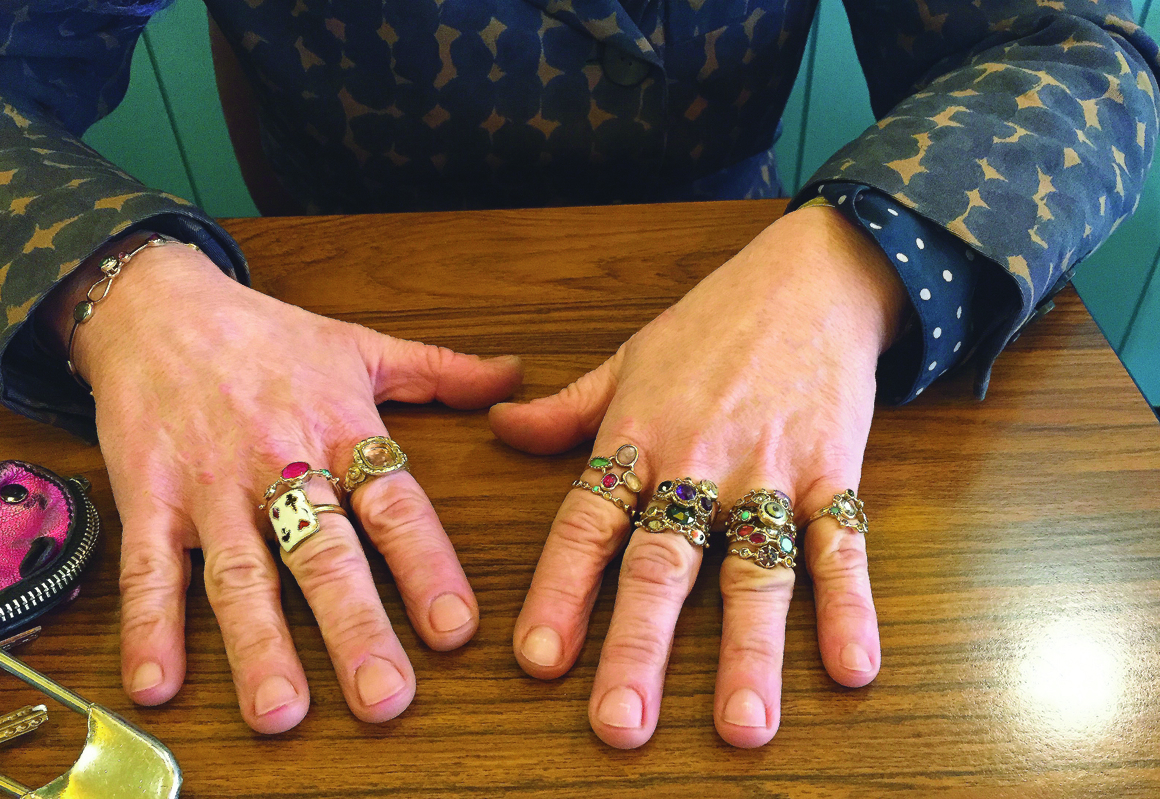
What isn’t really obvious, as she has quite a hair-raising look now (literally, she has blue hair), but a few years back (well, decades ago actually and I’ll be quite honest : we’re the same age!), Catherine was a well-behaved young lady living in the bourgeois 16th area of Paris. Her father was a talented draftsman of luxury shoes, her mother collected beautiful objects, and she was brought up in a creative, asthetic environment.
I can imagine her back then : impertinent, cheeky and charming, the leader of the pack, Sophie from the Countess of Ségur, a tireless troublemaker, the sort of girl headmistresses fear like the plague, who nurture inside themselves the virus of free-living decadence, banned by the strict codes of conduct of a school in bourgeois Western Paris. Their strong personalities and decent upbringing protect them from the harshest punishments, their school teachers balk at their intelligence and charisma, no way would they make martyrs of them!
So it was that Catherine spent her high school years peacefully dreaming and drawing. She loved that, but as for the rest, apart from her friends and classical singing, she didn’t give a damn! After a year spent playing truant, she passed her Bac and was accepted into the experimental design school ENSCI, a jewel from the Mitterrand era, whose mission is to insert creativity into companies. The team of directors was quite off-beat, whilst the teachers were bohemian, wacky visionnaries.
It’s fab, the school is a hothouse of creativity, a living, breathing, laboratory, students head up projects from A to Z for industrialists, she learns everything, does everything, from drawing, to making the maquette, to manufacturing a product in an extraordinary setting on the rue St Sabin, in a huge workshop full of every tool imaginable used to create and put together.
With her friends Sigolène and Reno, she launches into creating a line of rubber jewellery, « La Braguette magique » (The Magic Fly : you could not invent this !).
Success is immediate, incredible, delirious, the press jumps on it, the editors Pylon buy the rights, media success transforms into commercial success. At the age of 20, Catherine and her accomplices are the stars of the school.
Once they leave, both girls set up their own workshop in the rue Vertbois. It’s the real old Paris, it’s bohemian, it’s underground, it’s big, it’s their home sweet home. With the brother of Sigolène, they do up the workshop. They are the queens of the world, and with all the frenzy which drives them to create, they begin designing attractive and unusual objects for the home to which they give poetic names such as “the Vase of April”, “the Cubic garland”, “the Cornet lamp”, or “the Famished dishes”. Tsé & Tsé associates was born : long live Tsé & Tsé !
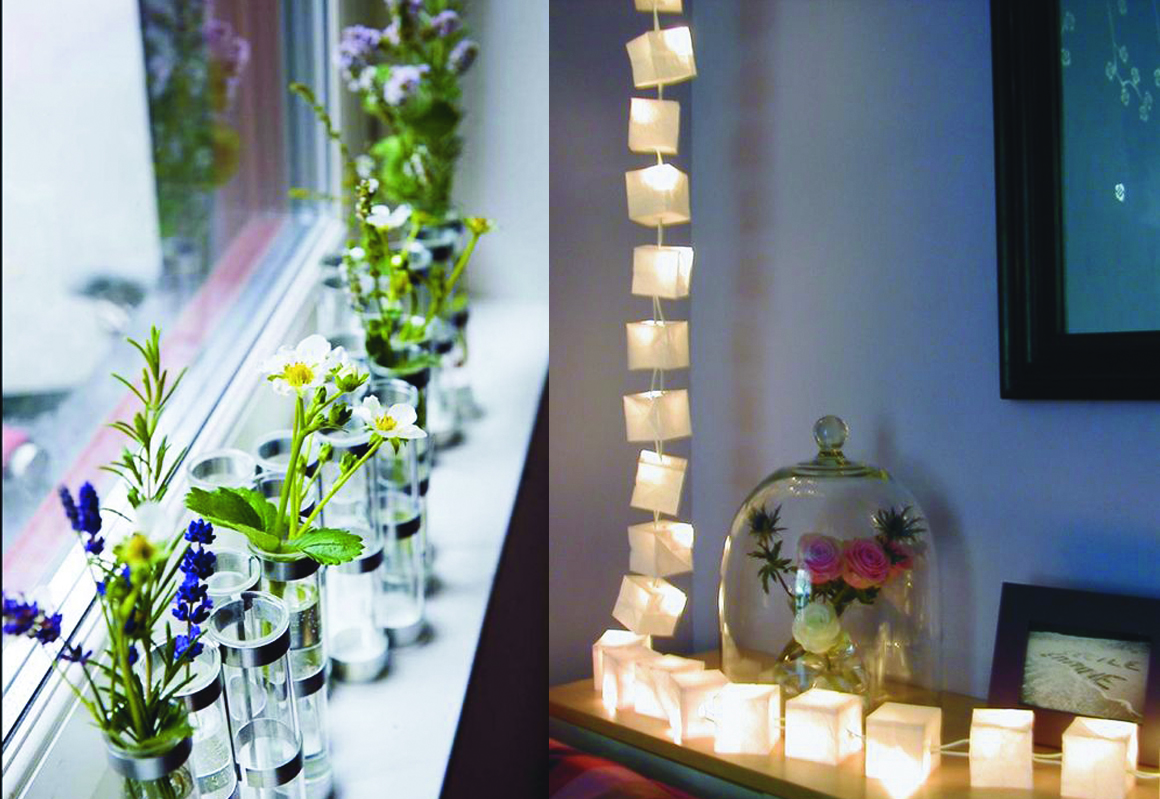
But now, you might ask, what could be the punch line of this fairy tale?
There’s no finale just yet, on the contrary, at this moment Catherine is on top of things, she’s at her finest. The Tsé & Tsé family is going to make its way step by step, without any fuss, without too much production, without trade shows or advertising, without any commercials, just with super-careful, paternalistic management. With just the love of beautifully finished work, small series are produced to order, customers are delivered by bicycle in Paris, and following their hearts, partnerships selected with faithful distributors of the brand and its products. The press applauds, the customers adore it, it’s the consecration, the golden age, the family is happy.
And then, as in the life of any family, there are circumstances which upset the balance, causing ruptures, changing the course of events. The fairy tale gets closer to a thunderstorm : passion enters Catherine’s life.
She meets a man, a handsome unpredictable guy, tempestuous, dark, dashing, a real rebel, a guy who ravages everything in his wake, like Clyde Barrow. And I wouldn’t be here telling you this story, if this guy hadn’t been a brilliant jewellery designer. Because it’s at this stage of the story that jewels enter the loop, the loop that is Catherine’s life.
I shouldn’t really turn this into a melodrama for you, nevertheless, I’m going to.
Catherine is going to love Serge, who is going to love Catherine. They are young, they’re beautiful, they’re talented.
That’s the synopsis, love story style, absolutely and totally.
They are going to love each other, they are going to share everything, they are going travelling, she’s going to make him discover India, he’s going to make her discover jewellery. Life opens up ahead of them, one thousand things to share, one thousand projects, it’s the paroxysm of happiness, any more would be unbearable. Not long after, Serge crashes in a motorcycle accident, he’s no longer there any more, he leaves Catherine alone, all alone.
It’s all gone wrong.
Mournful times, no more desire, no more life, no more objects, the creative spark of designer Catherine has burnt out, it took flight with Serge. Sorrow has congealed everything, she has run out of ideas, of energy, of creativity. The cheeky Sophie of the Countess of Ségur, the rebel of the Braguette Magique, the prolific creator of Tsé & Tsé, all these characters have left Catherine. She has become an empty shell.
While she trails along in her life in slow motion, she begins thinking more and more about jewellery. Serge’s jewellery, hammered silver which darkened his fingers, engraved with poems and love messages, talismans which carried hope. She thinks about her idea to make gold jewellery with stones one day, she gets out this amazing ring they’d designed together, a multitude of mobile opals on a ring, she puts it on her finger, making the deep reflection of the opals vibrate, and replaces it carefully in its box, it’s a treasure, a concentration of memories.
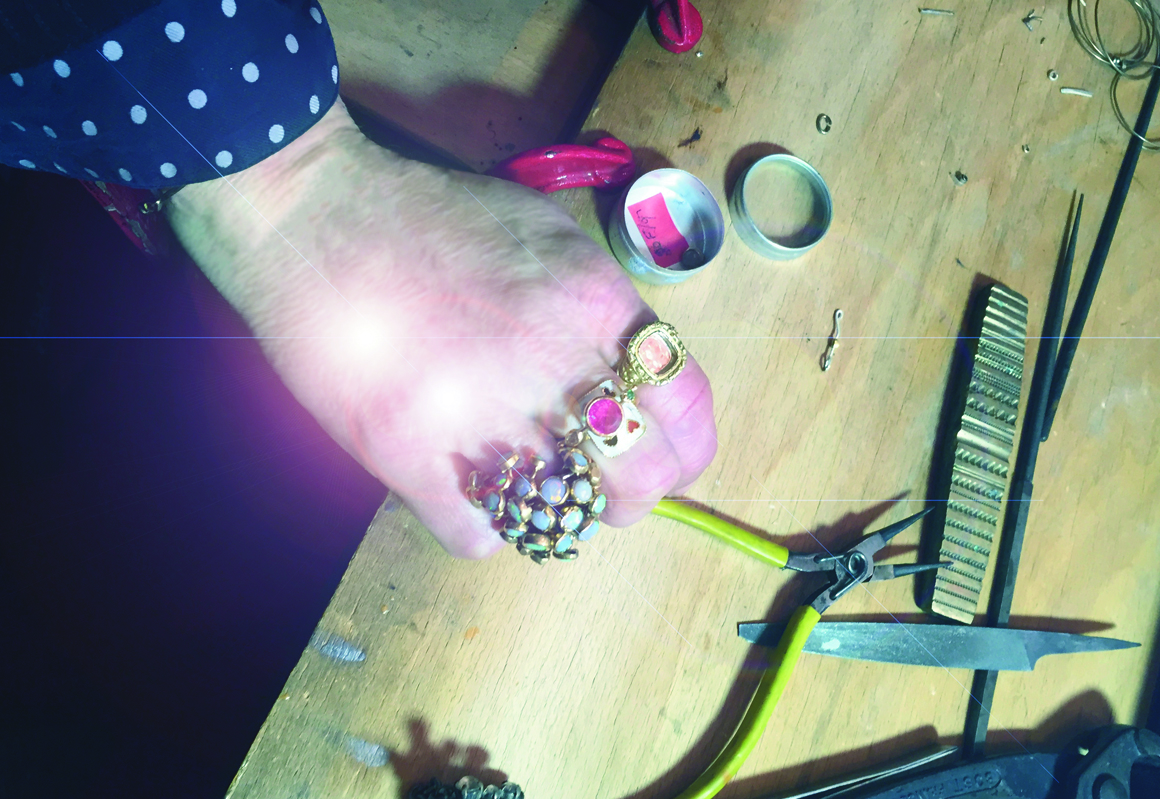
It’s jewellery which took Catherine out of her darkness. Without really understanding why and how, whilst she could no longer even manage to draw the slightest object, she began to search in India for fantasy pieces of jewellery, stones, glass beads, pretty things. Quick as a flash she trained as a jewellery craftsman, she installed a little workshop in her home, and as Serge had done so effectively, she also began to get darkened hands from transforming the treasures she brought back from her journeys into gorgeous jewellery, which her friends all loved at once.
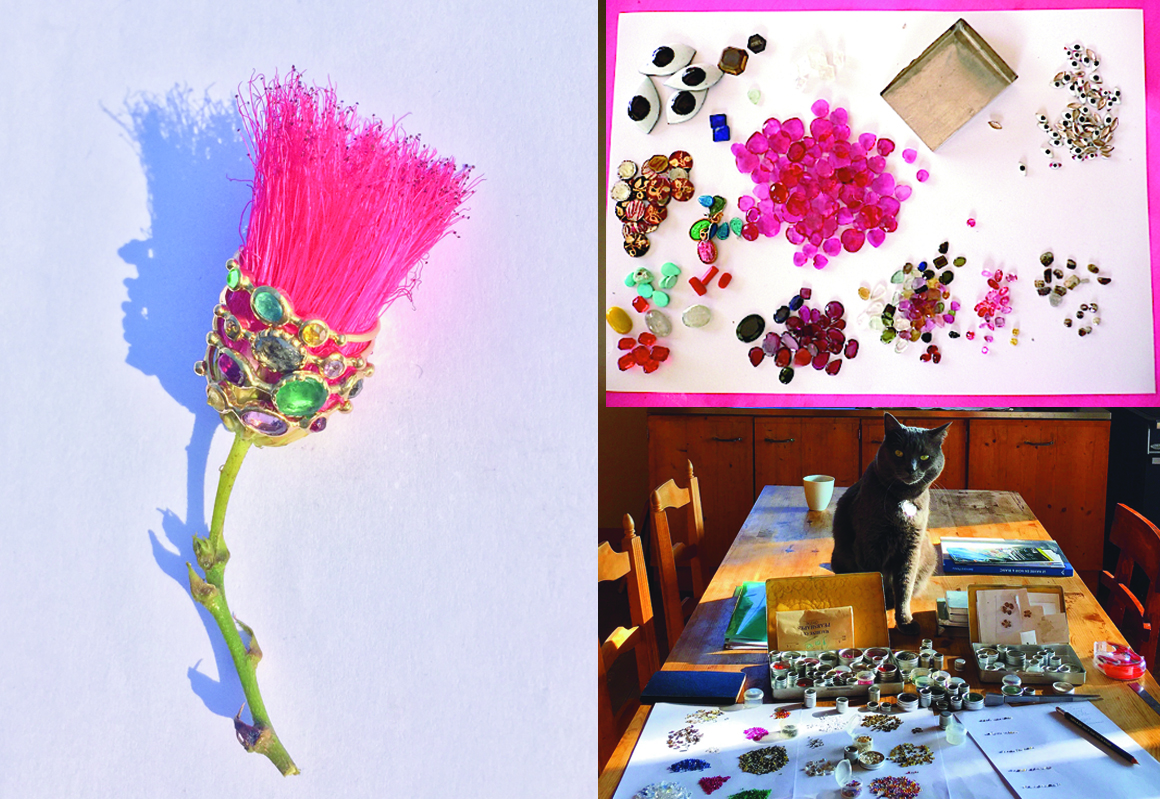
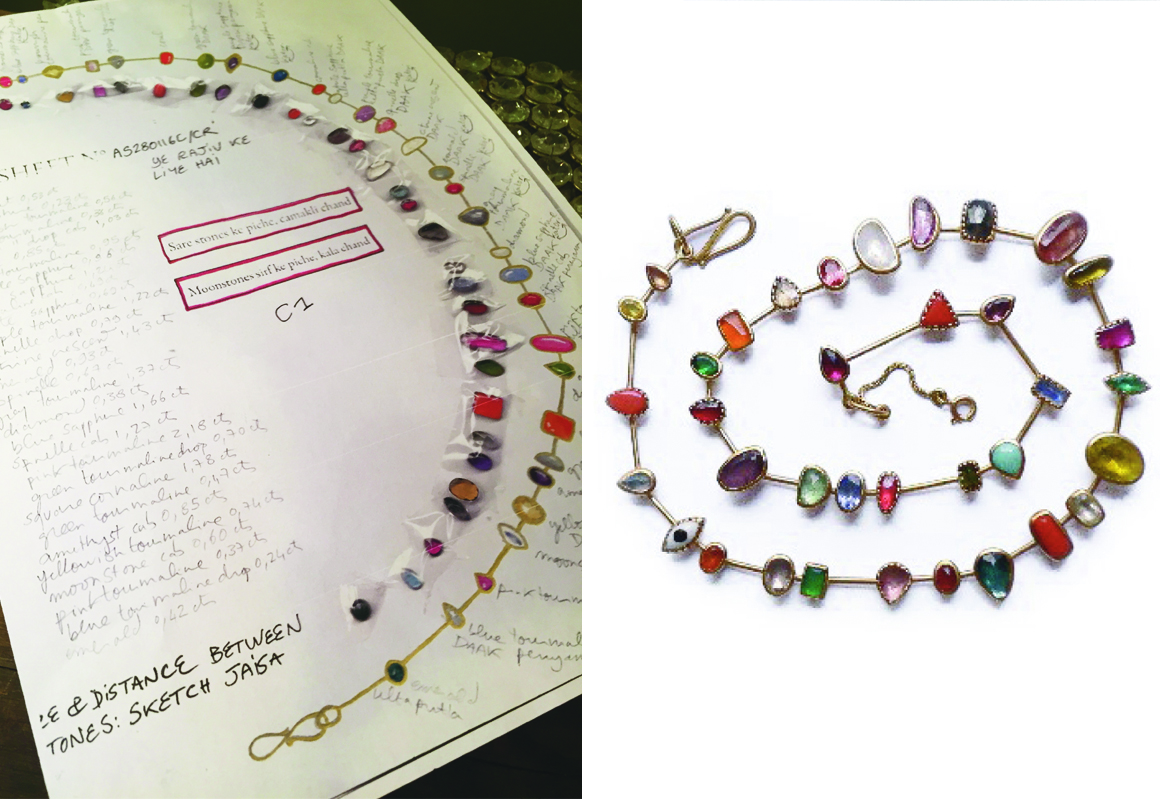
For a long time, Catherine did not realize that she was changing jobs. She made rings as we hang onto a life raft in a frenetic way, just to be able to breathe over the surface of the water.
It was in the early 2000s that I began seeing her rings on all the most stylish girls, her wonderful daisies with petals of “diamond slices”, her small multicoloured rings which boldly mix rough diamonds with a charming piece of fushia pink glass, an eye in enamel, an opalescent labradorite, and a blazing ruby. She hunted, accumulated, classified, drew, made everything without really thinking, in a benign, creative drive, and with the idea, somewhere, that she was continuing something from her story, something that would never end.
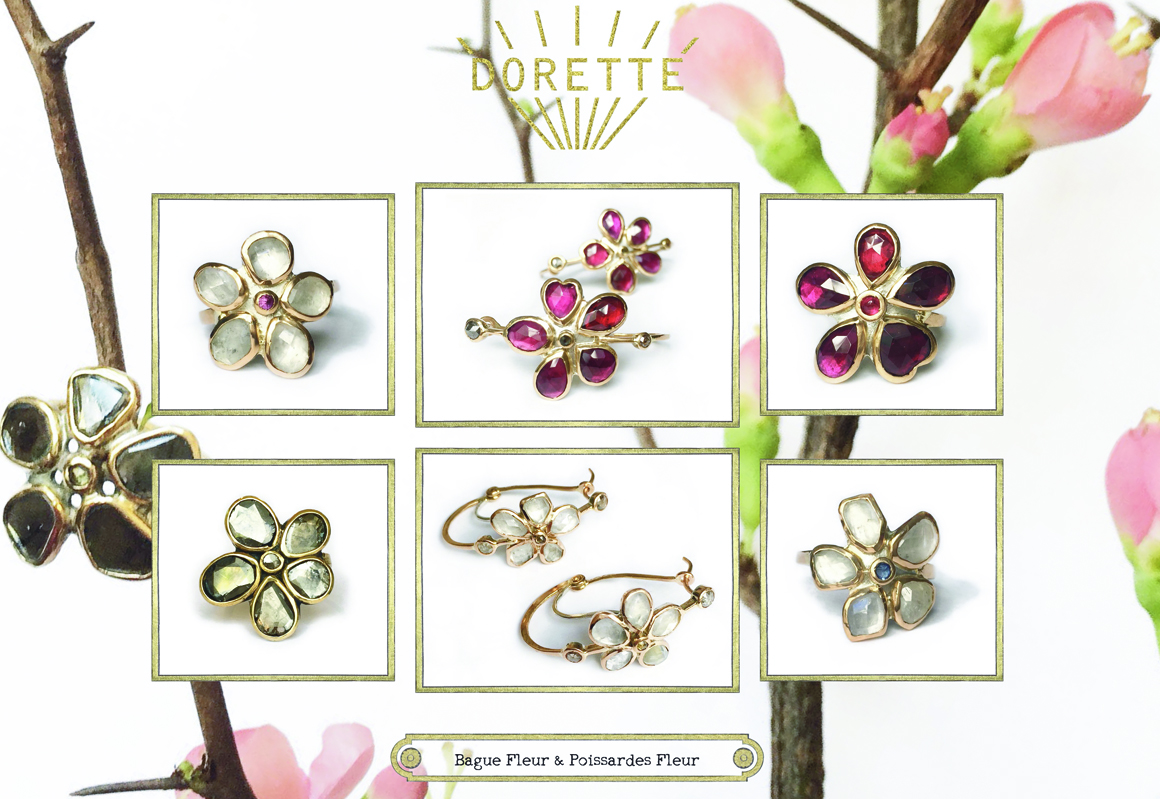
When I saw the girlfriend of Georgie, one of my childhood friends, wearing the Daisy ring designed by Catherine, I remember asking him who had made this wonder. Back then, the brand Dorette didn’t exist yet, and I saw Daisy rings blossoming everywhere, without knowing where was the source. It was a bit like a game, a treasure hunt which makes the found object even more desirable; it was necessary to belong to the happy few to have one.
And then time passed, and success gave a nudge to the course of events, Catherine created the brand Dorette, and began to organize her production in India, and accepted the idea of being distributed by others.
Today, Dorette is a brand that continues in its own particular way, that of Catherine’s intuition. She became known thanks to Hod, Merci and White Bird, and develops step by step, at points of sale that she selects carefully.
She has her own place, an amazingly colourful workshop, full of incredible objects, housed in an old building of the rue du Temple, where she creates her jewellery, receives her suppliers, customers and friends, drinking roasted barley tea.
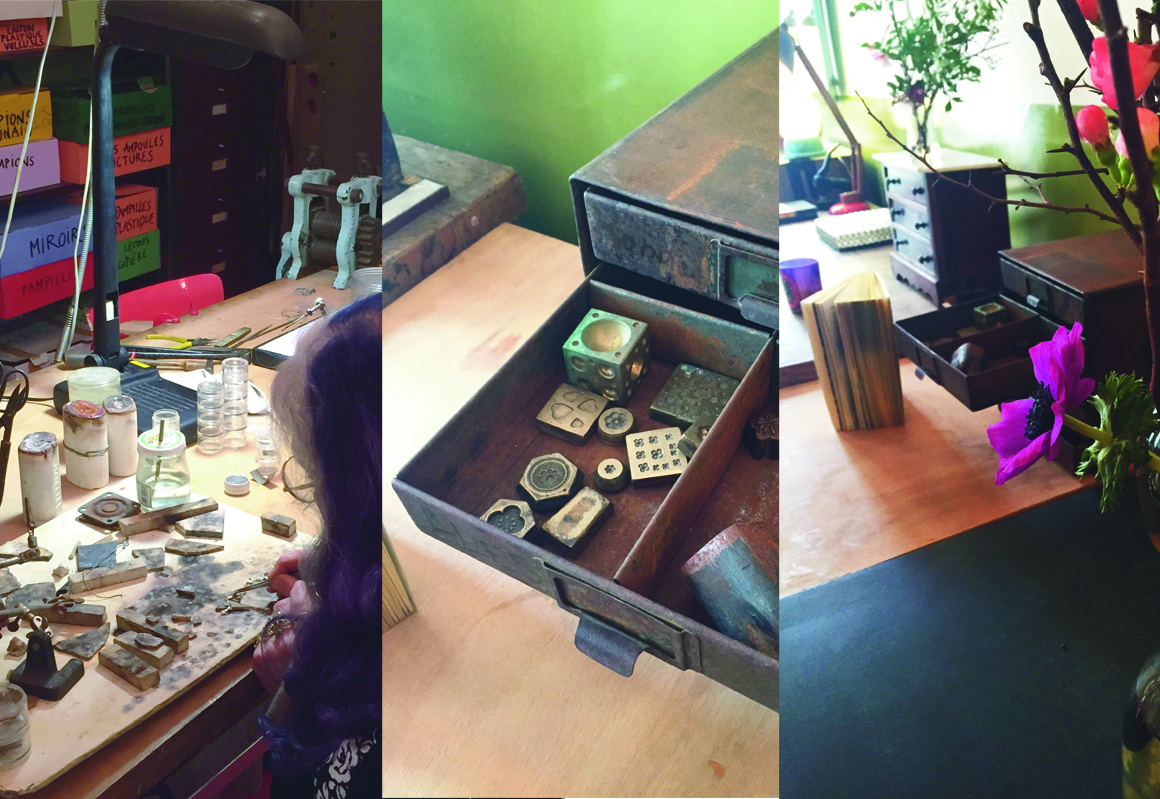
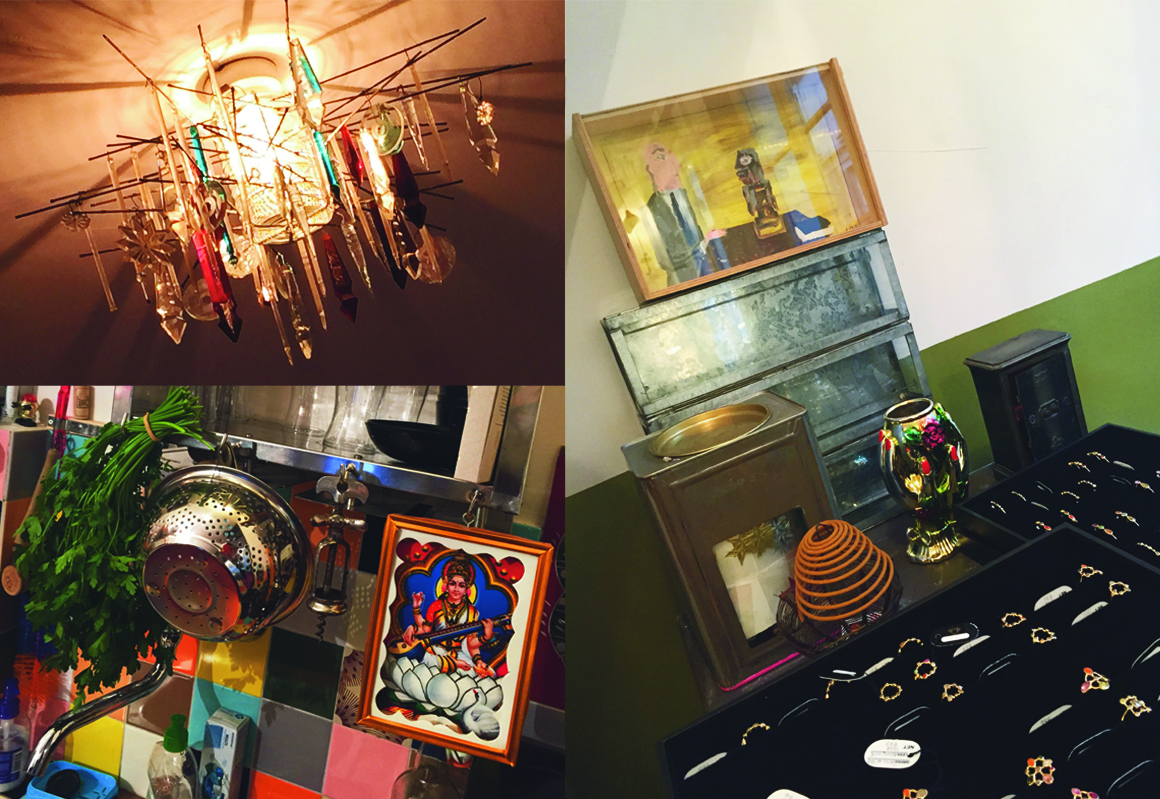
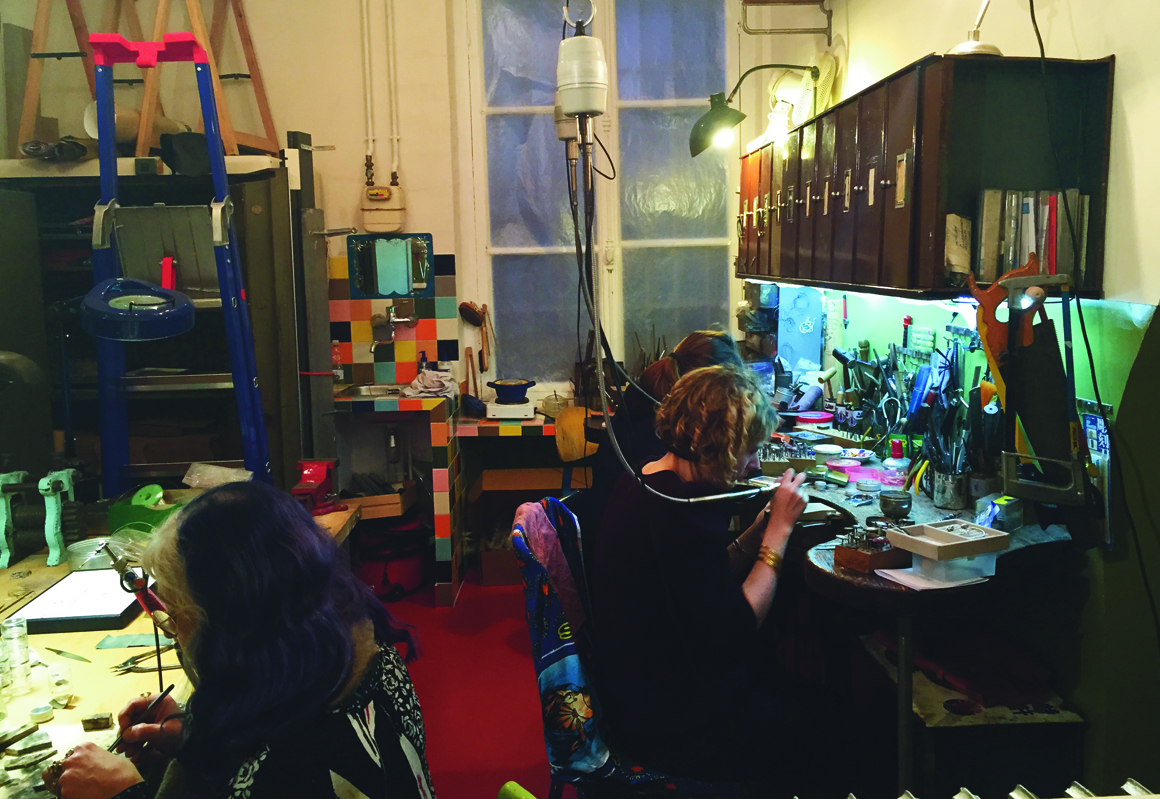
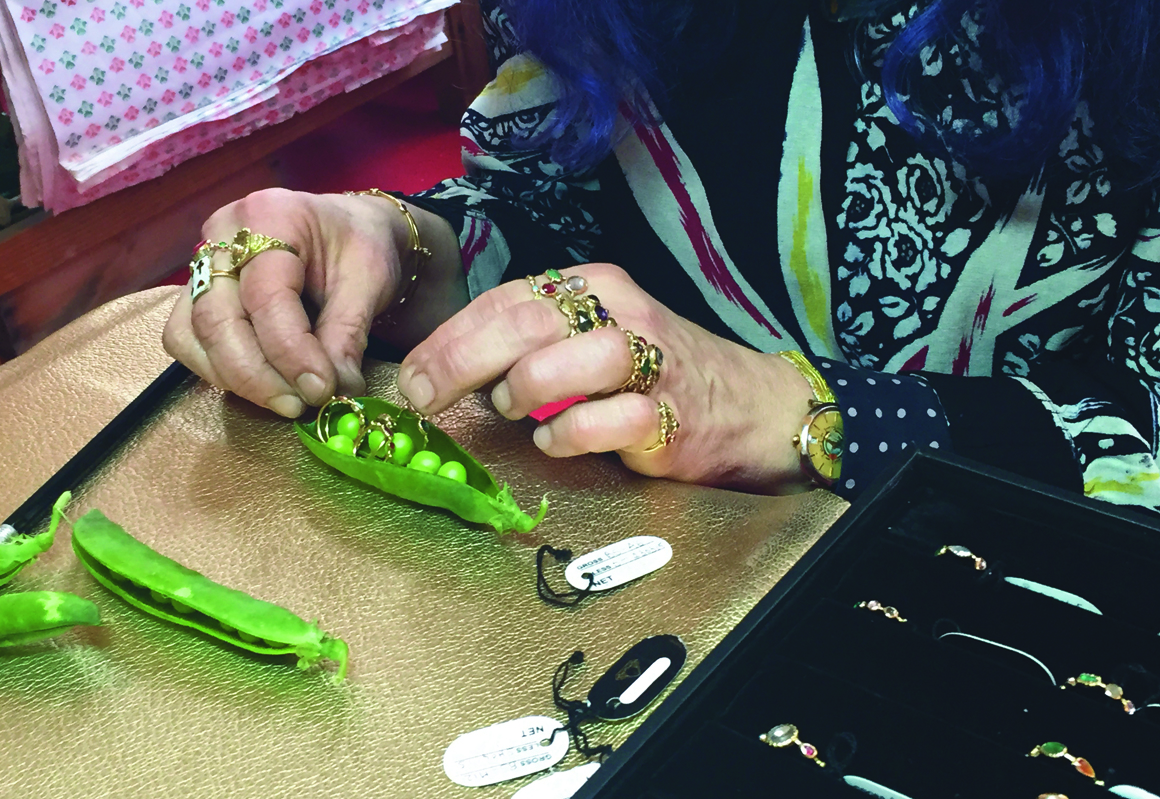
She doesn’t like uniformity, runs away from department stores like the plague, and has developed a philosophy verging on commercial misanthropy: no question of advertising, so sure is she of her own worth, she thinks it’s devalorizing.
It’s also what pleases me in her character, she doesn’t compromise, she’s categorical.
She’ll never post a picture of herself on Instagram, it’s always her jewellery that she shows.
She knows the whole planet of designers and creators from Paris-Delhi, but won’t boast about it and isn’t the type to be seen on the arm of a VIP.
She avoids paperwork, it’s Agnes, her right-hand woman, who takes care of the “admin” part of the business.
She’d prefer to commit hara-kiri rather than sell her brand, we have to approach her, basta.
She hates those ready-made phrases in the press, such as “the creator created according to her desires”, she thinks it stinks, she’s right.
She runs away from stores like Ikea, Galeries Lafayette, chain stores, franchises, archetypes and products in series. She never makes two identical pieces of jewellery, she’s right there too.
She isn’t showing off, but cultivates a unique look : blue hair, vintage clothes, polka dot blouses, plus a hugely impressive accumulation of her own jewellery designs on her fingers, wrists, neck and ears, styled like ethnic armour.
She says that she’s old and that old women don’t interest anyone, but here she’s mistaken. She has the creative energy of a 20-year-old girl, and if we believe the phenomenal success of Iris Apfel, who I came across this morning at Le Bon Marché chatting with Miss Agnes, over 90 years old and still looking good, the age criterion could become more relevant and even super hip as young people get disenchanted by the Snapchat era!
Catherine has something special that leaves nobody indifferent. To say that she’s not like anyone else is an euphemism, her crux is reversed in relation to everybody else, to the ordinary person, to the mainstream.
Her story is unique because she speaks of love, love always. Love of objects, of jewellery, of work, a place, friends, a man, a love that she contemplates from afar, a little ironically, as if she was laughing at herself for having succumbed to the detriment of reason.
It’s not by chance that a heart is the recurring motif in her jewellery, but even when it’s pink, it’s never mawkish, it’s a defiant wink to the rather big heart that guides her in her daily life, this new life of jewellery which she adopted … out of love.

